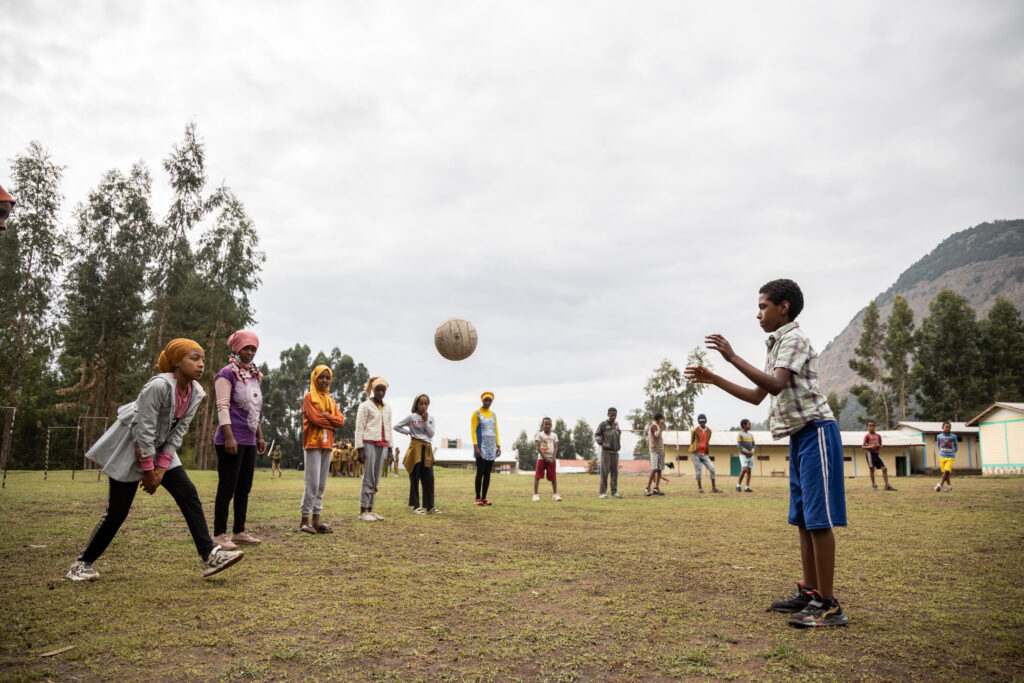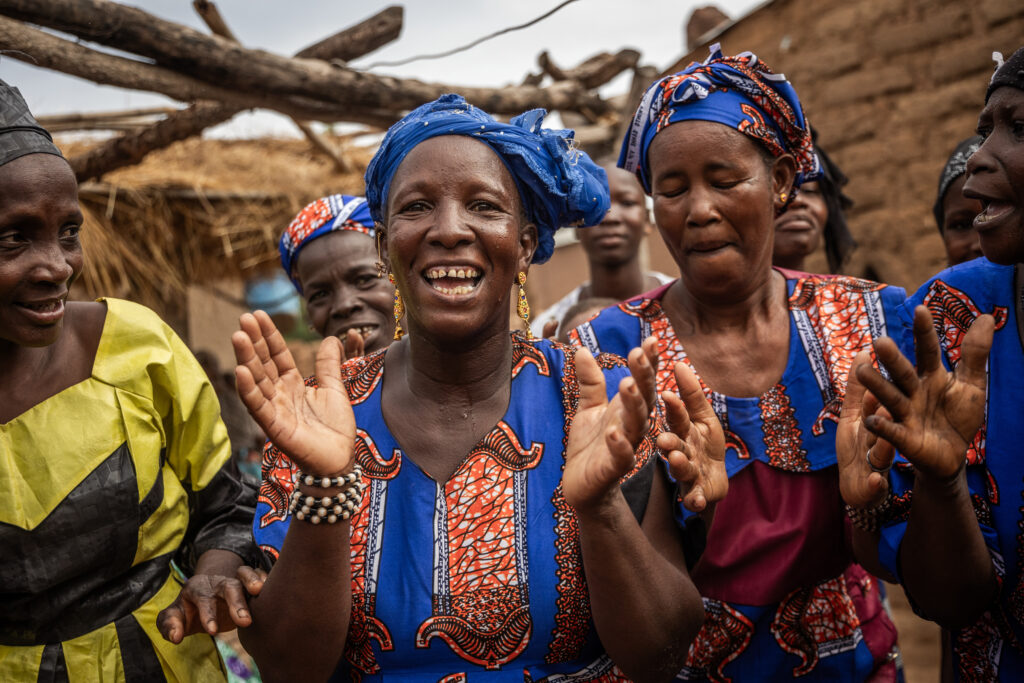Localization is the hot topic in the development world – but it is not necessarily new for implementers or USAID. Instead, the conversation and delivery on the expectations of localization are going through a metamorphosis, prompted in part when USAID unveiled its policy one year ago and the response by implementer of all sizes to adapt their programs.
USAID’s version of localization places local actors at the forefront through a series of internal reforms, actions and behavior changes to strengthen local systems and be responsive to community needs. This policy is a significant step towards shifting greater leadership and decision-making authority for priority setting, project design, implementation and results measurement to people and institutions within their own countries.
This policy could empower communities to play a central role in shaping their own destinies, which is not only a matter of principle but a practical imperative. Embracing community led development approaches not only fosters self-reliance but also unlocks the potential for more impactful and enduring outcomes, positively transforming the lives of those we aim to support.
Development implementers are now at the tricky part: how to turn localization policy into action. Much of the discussion has gotten stuck on the funding side – which we all recognize as being too few dollars for the massive challenges facing humanity – with strong opinions about USAID looking to direct a larger portion of assistance funding directly to credible local partners (25 percent in 2025 and 50 percent in 2030).
However, there are core principles to localization that are getting overshadowed in that conversation and that must be kept at the forefront to create an effective localization approach.
Designing in a consultative manner
Regardless of a program’s duration, size or scope, our approach must always prioritize sowing the seeds of sustained growth and empowering others to pursue their own goals and accomplishments. It is imperative to consult with communities beforehand as it enables us to break free from fostering dependency and instead foster self-sustainability.
The international development community can serve locally led development by respecting host countries’ chosen policy framework and goals rather than imposing external ones. The focus should be on integrating initiatives aligned to their genuine needs and aspirations into the existing social fabric, institutions and systems, allowing them to endure beyond external support.
At the heart of this approach lies a community-anchored mindset, which is not merely optional but essential for the success of any program.

Rethinking what we know
It is crucial to uncover facts, challenge assumptions and validate our theory of change during consultation with communities.
Promoting and encouraging a community-based approach should begin with a comprehensive mapping exercise or situation analysis, conducted in close collaboration with community structures — both traditional and contemporary — as well as local government entities and civil society organizations.
We must firmly believe that local actors and communities are the best equipped to understand their own situations, identify challenges, determine priorities and develop effective solutions tailored to their unique context. Experience has demonstrated that community driven development projects often deliver public investments to impoverished individuals with greater speed, cost-effectiveness and overall effectiveness.
This inclusive process fosters a profound sense of ownership and responsibility within the community, laying the foundation for sustainable progress and positive change.
Acknowledging the importance of culture
Our approach must wholeheartedly acknowledge culture as a vital ingredient in shaping collective narratives and its transformative power to build a sustainable future that benefits everyone.
To achieve this, our approach should be culturally sensitive, respecting and valuing the unique traditions and customs of each community. Contextual appropriateness is essential, as it allows us to tailor development initiatives to suit the specific needs and aspirations of the people we aim to assist.
Ultimately, embracing culture in our approach not only fosters inclusivity but also empowers communities to take ownership of their development journey, paving the way for a more sustainable and prosperous future.

Developing real partnerships
Sustained growth and development can only be promoted by embracing partnership.
Partnering is not about patronizing, dictating terms because you are in control of resources, forcing, imposing, restricting, dominating or monopolizing. Instead, partnership embodies the essence of collaboration, where all parties work together with the spirit of equality, mutual respect, and reciprocity, united by a common goal that has been jointly developed.
In such a dynamic, each party’s perspectives, expertise and contributions are valued and respected, fostering an environment where ideas are freely exchanged and decisions are made collectively.
This genuine spirit of partnership nurtures an environment of trust and openness, promoting innovation, shared responsibility and the pursuit of sustainable solutions. By transcending traditional power dynamics and embracing true partnership, we can unlock the potential for transformative change and make meaningful strides towards inclusive and lasting development.
Involving the private sector
Developing countries have untapped potential that can lead to thriving economies. Unlocking this potential necessitates the right combination of well-crafted local policies and a strategy to attract local and foreign investment and technology, which can unleash the full potential of private-sector engagement.
An excellent example of this collaborative approach can be seen in the USAID West Africa Trade and Investment Hub (Trade Hub) project, which is implemented by Creative. This initiative seeks to enhance private sector competition in West Africa by co-investing with private enterprises and partnering with research institutions.
By nurturing partnerships between public and private entities and supporting investments in strategic sectors, we can facilitate sustainable economic growth in developing countries, promoting prosperity and better livelihoods for their people. This kind of synergistic approach aligns the interests of various stakeholders, unleashing the immense potential for transformative development outcomes.
Championing institutional change
Institutional change stands as a fundamental requirement for the success of any development effort. To achieve this, governments must proactively seek ways to transform public institutions, enhancing their accountability to the most vulnerable members of society. This necessitates effective decentralization of administration, resources and political power, supported by a robust accountability structure.
Growth and development falter when these essential ingredients of good governance are either absent or inadequately considered. By prioritizing institutional change and promoting effective governance, we can create an enabling environment for development efforts to thrive, benefitting the most marginalized members of society and fostering equitable progress.

Empowering local first responders in conflict and post-conflict
In conflict and post-conflict situations, our approach must center on local and first responders who are already present on the ground, including communities, local civil society organizations, religious and traditional groups and others. Local responders are often the first to step up to the plate, and their intimate knowledge of the situation, agility and swift action make them indispensable during crises.
The European Commission Inter-Agency Standing Committee strongly asserts that humanitarian action is often more prompt, cost-effective, and efficient when driven by local actors.
While local responders might lack some of the expected sophistication and compliance skills required by funding agencies, their effectiveness in responding to crises cannot be underestimated.
Our approach should encompass a two-fold objective: firstly, addressing the immediate needs of those in vulnerable situations, and secondly, empowering local responders to enhance their capacity for more effective, compliant, and efficient responses. This underscores the importance of collaboration and establishes a clear path towards swift co-creation of solutions.
Don’t miss the forest for the trees: Remembering the core principles of localization
It is of utmost importance that international development partners prioritize the fundamentals of locally led development over peripheral issues. True effectiveness in development efforts lies in being inclusive and responsive to the needs of communities, rather than solely focusing on allocating a larger portion of assistance to local organizations.
Embracing these fundamental principles will increase effective approaches, achieve the policy’s goals and — ultimately — benefit the people and organizations that we all want to serve.
Semere Solomon is the Senior Director of Strategy.
[/vc_column_text][/vc_column]
